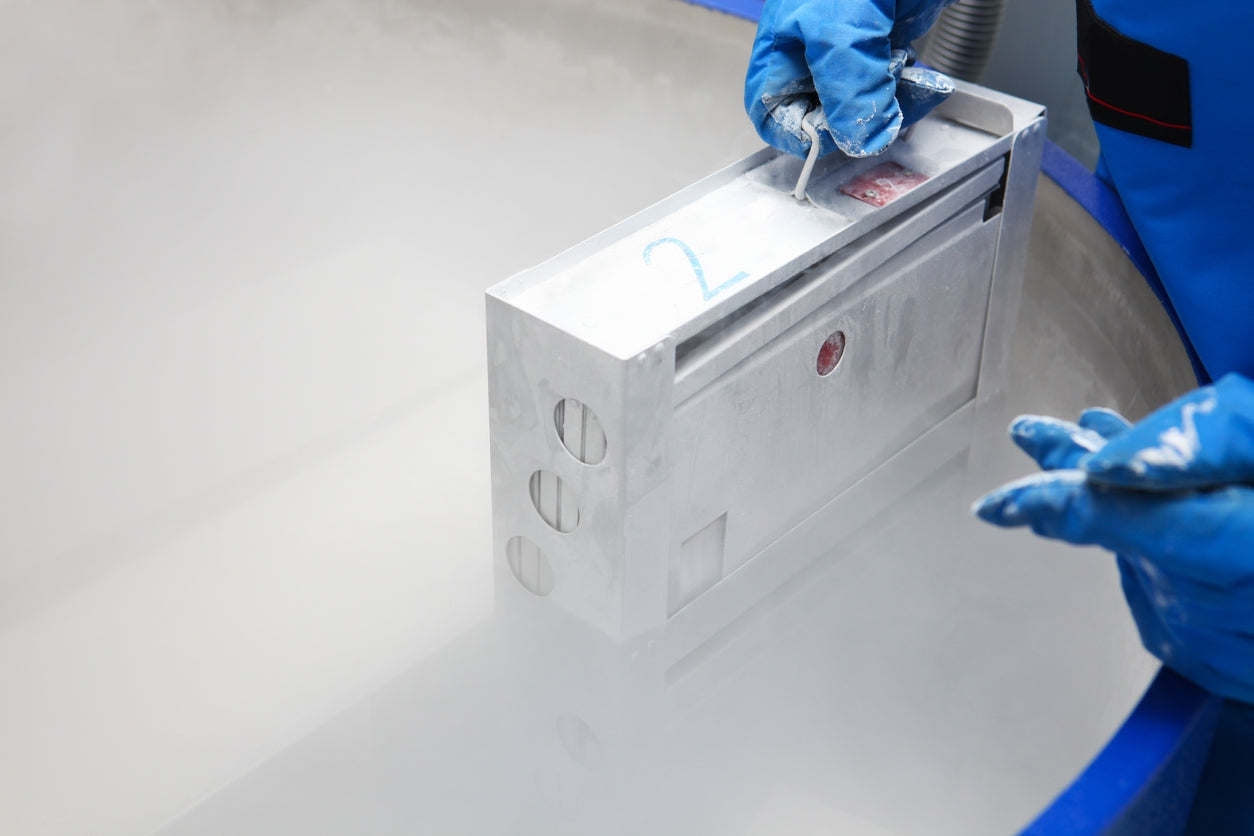Cryogen gloves, better known as Cryogenic Gloves offer 'thermal protection' against tasks performed in extremely cold temperatures and against the risks associated with liquid nitrogen spills or splashes. Water Resistant Cryogenic Gloves are ideal for use in ultra-cold environments such as the processing of frozen foods, research labs, and dry-ice blasting.
These extreme cold-protection gloves help to keep the user's hands warm and comfortable in extremely cold temperatures (as low as -320° F) while not interfering with dexterity. One of the main uses of cryogen gloves is to safely handle chemicals such as dry ice and liquid nitrogen. The gloves include a moisture-wicking breathable liner and an open or knit cuff. The knit cuff offers a more secure fit, while the open cuffs offer an easier way to take off or put on the gloves.
Hand Protection
The majority of accidents that involve the arms or hands are categorized under 4 main hazards. These include abrasions, cuts, chemicals, and cold or heat. Gloves such as cryogen gloves have to be worn when there are significant potential dangers from lacerations, abrasions, cuts, chemicals, biologicals, burns, punctures, or when there is a hazardous temperature extreme present.
Using hand protection in the correct manner can assist with protection from potential physical and chemical hazards. Wearing gloves is one of the stringent requirements when working with chemicals that can absorb easily into the skin or/and hazardous substances such as 'select carcinogens', substances that present high degrees of toxicity and reproductive toxins. There isn't one glove type that will provide the very best protection against all types of chemicals or a glove that will completely resist permeation and degradation to every type of chemical.
What Does The Term Cryogenic Mean?
"Cryogenic" is a term used to describe the production of a very low temperature or the relation to very low temperatures. A cryogenic liquid is a liquefied gas that is produced when cooling the liquid under high pressure and extremely low temperatures. This process creates special safety and health hazards. These are the liquids that have a boiling point below –150° C and are present as a gas when at normal pressures and room temperatures. Every cryogen type will turn into a liquid under various types of pressure and temperature, but they all share two primary properties. They are all ultra cold and only a small amount of these liquids has the potential to expand into gas at extremely high volumes.
What Type Of Glove Is Needed To Work With Dry Ice And Cryogenics?
Cryogen gloves need to withstand extremely low temperatures related to dry ice and cryogenic liquids. The gloves must feature insulation and have a loose fit when working with a cryogenic liquid so that can be removed quickly and easily if a spill goes inside the wearer's glove.
Conclusion
Cryogen gloves are designed to provide protection to the hands when working with materials that are extremely cold (down to -300°F). The exterior of cryogenic gloves is also designed to repel liquids and are commonly worn when working with dry ice and liquid nitrogen, processing foods that are frozen, and for people that conduct work in blood banks.
What Are Cryogen Gloves And Their Uses?

